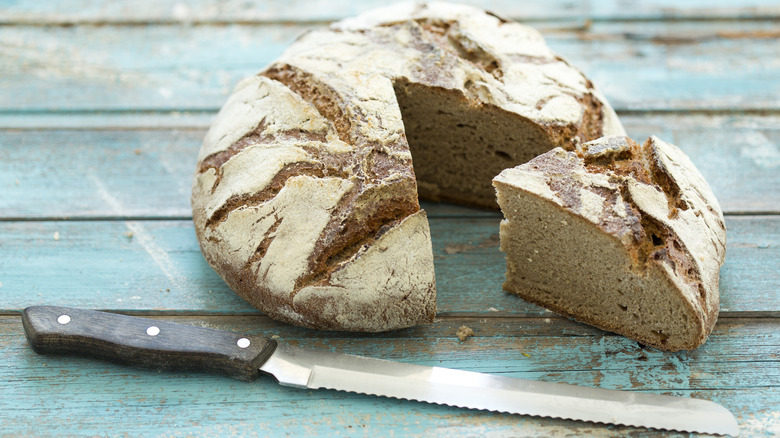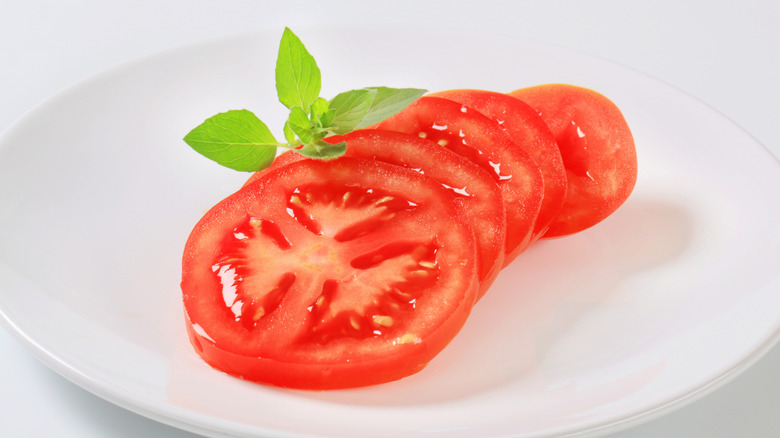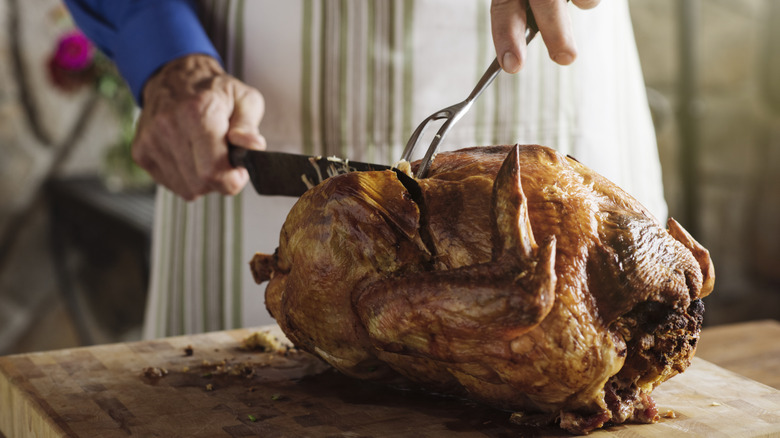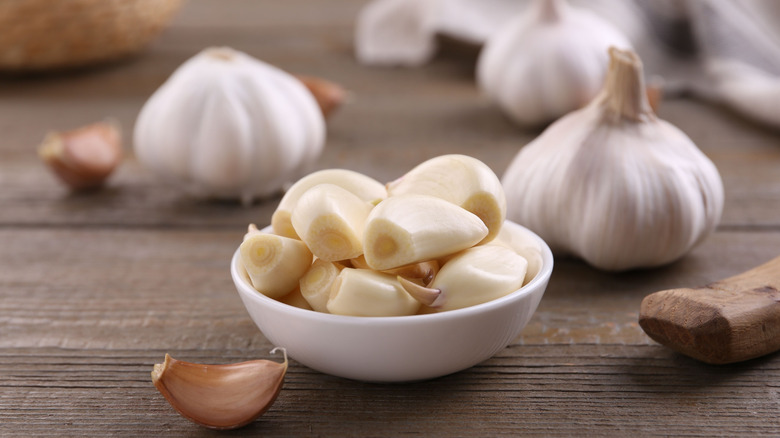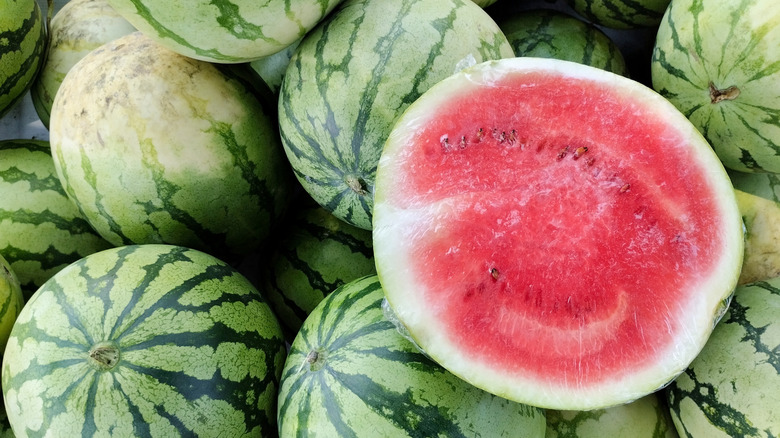Your Bread Knife Has Other Uses Apart From Cutting Loaves
Bread knives are a kitchen staple we all reach for when it's time to slice up ... well, bread. The serrated edge makes them perfect for sawing through a loaf's crumbly exterior without turning it into a flattened mess. But when it comes to cutting anything else, bread knives are usually the last tool we'd think of using — though they actually have far more uses than one might expect.
The unique shape of bread knives — long, relatively skinny, with wavy edges — actually makes them an ideal candidate for cutting a variety of foods. From vegetables to desserts, the delicate touch of a bread knife can save you from a lot of kitchen nightmares. Just like with bread, we hate when our fruits and veggies get smooshed or our pastries crumble away under a less ideal blade. Treating other food groups with the same care we do a loaf of fresh bread will result in cleaner cuts and less cleanup, all thanks to the versatility of the everyday bread knife.
Use a bread knife to cut delicate fruits and vegetables
Bread knives are great for cutting without applying a huge amount of pressure, meaning they work well with delicate or juicy fruits and vegetables. For example, when slicing soft tomatoes or ripe citrus, the serrated blade will cut effectively without squishing out too much liquid.
Not only does this save you from a messy cutting board, but it also preserves the shape and flavor of your produce — perfect for when you use your cut up pieces as a decorative garnish, like in a smoked mozzarella and Caprese salad or when cutting your citrus into juicy supremes.
Your bread knife can carve cooked meat
While it's better to use a carving or slicing knife when cutting raw meat, a bread knife can lend itself well to carving cooked proteins. The length and thin nature of the knife, combined with the serrated edges, work well when slicing through the thick yet tender tissue of dishes like a pot roast or a Thanksgiving turkey.
Your bread knife will carve through the meat's tougher fibers since the serrated edge can handle going against the grain without pushing down too hard and smashing the moisture out of the meat. While it may not work for every cut, it is a great trick for hacking at the turkey during Thanksgiving or the brisket at Chanukah.
Slice through pastries with a bread knife
You'll usually find a case of delicious pastries right next to the loaves of bread in the bakery. If you're planning to slice them up to share, or you want to use leftover buns to make a bread pudding, a bread knife should be your first choice.
Similar to fruits, you can cut through various flaky layers of thin and crispy puff pastry, strudel, or even a classic butter croissant. The serrated edge will protect against flattening your pastries and preserve that light and airy feel that's all part of the bakery experience.
Use the bread knife's blade to crush garlic cloves
Before cutting up your garlic, you have to peel the cloves, and you can actually use a bread knife for that. A popular hack for peeling garlic is by squashing it between the flat edge of a knife and your cutting board to loosen the skin, so it flakes off.
How does it work? The length of your bread knife allows you to line up multiple garlic cloves to smash and peel all at once, making it a great candidate for this hack. Just be sure to press gently, so you're only removing the peel and not smashing your garlic into a pulp — unless your goal is to make garlic paste, of course.
Use a bread knife to cut through tough rinds
If you've ever wondered what the best kind of knife is for cutting watermelon or other hard-rind fruits and veggies, the answer is the serrated kind, giving you yet another way to use your bread knife. The serrated edges can rip through the tough rind but can also handle the more delicate pulp inside of produce like cantaloupes and squash.
Additionally, the length of the blade also makes it easier to tackle larger produce, so you can slice through the entire fruit or veggie in one go. As much as bread knives are good for squishy fruits, their mastery over hard rinds is the best of both worlds.

